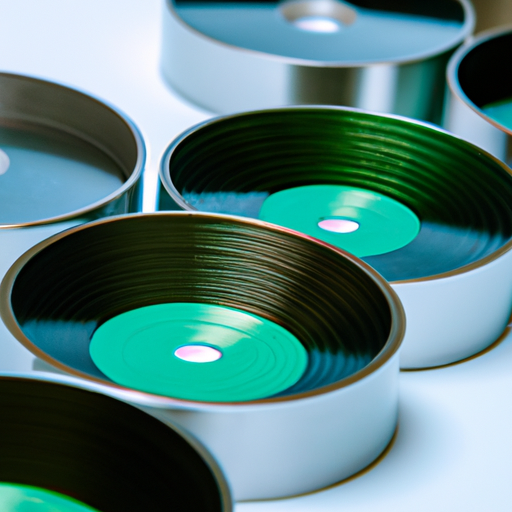Film capacitors are widely used in various electronic devices and systems due to their high reliability, long lifespan, and excellent electrical properties. The production process of film capacitors involves several steps to ensure the quality and performance of the final product. In this article, we will discuss the mainstream film capacitor production process in detail.
1. Film Selection: The first step in the production of film capacitors is the selection of the film material. The film material is usually made of a polymer such as polypropylene, polyester, or polycarbonate. The choice of film material depends on the specific requirements of the capacitor, such as voltage rating, temperature stability, and dielectric constant.
2. Film Coating: Once the film material is selected, it is coated with a thin layer of metal on both sides. The metal coating is usually made of aluminum, zinc, or silver, and it serves as the electrode of the capacitor. The thickness of the metal coating is carefully controlled to ensure uniformity and consistency.
3. Winding: After the film is coated with metal, it is wound into a cylindrical shape to form the capacitor element. The winding process is critical to ensure that the film is evenly distributed and tightly packed to minimize the risk of electrical breakdown. The winding can be done manually or using automated machinery, depending on the production volume and requirements.
4. Impregnation: Once the film is wound into a cylindrical shape, it is impregnated with a dielectric fluid to improve the electrical properties of the capacitor. The dielectric fluid is usually a high-quality oil or resin that helps to reduce the risk of electrical breakdown and improve the capacitance stability over time.
5. Encapsulation: After impregnation, the capacitor element is encapsulated in a protective casing to shield it from external factors such as moisture, dust, and mechanical stress. The casing is usually made of plastic or metal and is designed to provide adequate insulation and mechanical support to the capacitor element.
6. Testing: Once the capacitor is encapsulated, it undergoes rigorous testing to ensure that it meets the specified electrical parameters and performance requirements. The testing process includes measurements of capacitance, voltage rating, insulation resistance, and temperature stability. Any capacitors that fail to meet the required specifications are rejected and discarded.
7. Marking and Packaging: After testing, the capacitors are marked with relevant information such as capacitance value, voltage rating, and manufacturer's logo. The capacitors are then packaged in suitable containers or reels for shipment to customers. The packaging is designed to protect the capacitors during transportation and storage.
In conclusion, the production process of film capacitors involves several critical steps to ensure the quality and performance of the final product. From film selection to testing and packaging, each step is carefully executed to meet the stringent requirements of the electronic industry. Film capacitors continue to be a popular choice for various applications due to their reliability, long lifespan, and excellent electrical properties.
Film capacitors are widely used in various electronic devices and systems due to their high reliability, long lifespan, and excellent electrical properties. The production process of film capacitors involves several steps to ensure the quality and performance of the final product. In this article, we will discuss the mainstream film capacitor production process in detail.
1. Film Selection: The first step in the production of film capacitors is the selection of the film material. The film material is usually made of a polymer such as polypropylene, polyester, or polycarbonate. The choice of film material depends on the specific requirements of the capacitor, such as voltage rating, temperature stability, and dielectric constant.
2. Film Coating: Once the film material is selected, it is coated with a thin layer of metal on both sides. The metal coating is usually made of aluminum, zinc, or silver, and it serves as the electrode of the capacitor. The thickness of the metal coating is carefully controlled to ensure uniformity and consistency.
3. Winding: After the film is coated with metal, it is wound into a cylindrical shape to form the capacitor element. The winding process is critical to ensure that the film is evenly distributed and tightly packed to minimize the risk of electrical breakdown. The winding can be done manually or using automated machinery, depending on the production volume and requirements.
4. Impregnation: Once the film is wound into a cylindrical shape, it is impregnated with a dielectric fluid to improve the electrical properties of the capacitor. The dielectric fluid is usually a high-quality oil or resin that helps to reduce the risk of electrical breakdown and improve the capacitance stability over time.
5. Encapsulation: After impregnation, the capacitor element is encapsulated in a protective casing to shield it from external factors such as moisture, dust, and mechanical stress. The casing is usually made of plastic or metal and is designed to provide adequate insulation and mechanical support to the capacitor element.
6. Testing: Once the capacitor is encapsulated, it undergoes rigorous testing to ensure that it meets the specified electrical parameters and performance requirements. The testing process includes measurements of capacitance, voltage rating, insulation resistance, and temperature stability. Any capacitors that fail to meet the required specifications are rejected and discarded.
7. Marking and Packaging: After testing, the capacitors are marked with relevant information such as capacitance value, voltage rating, and manufacturer's logo. The capacitors are then packaged in suitable containers or reels for shipment to customers. The packaging is designed to protect the capacitors during transportation and storage.
In conclusion, the production process of film capacitors involves several critical steps to ensure the quality and performance of the final product. From film selection to testing and packaging, each step is carefully executed to meet the stringent requirements of the electronic industry. Film capacitors continue to be a popular choice for various applications due to their reliability, long lifespan, and excellent electrical properties.







